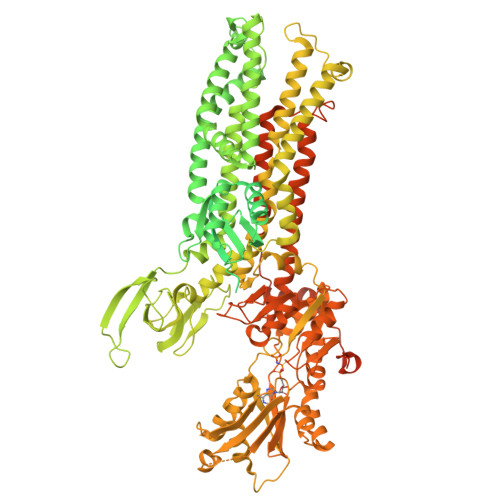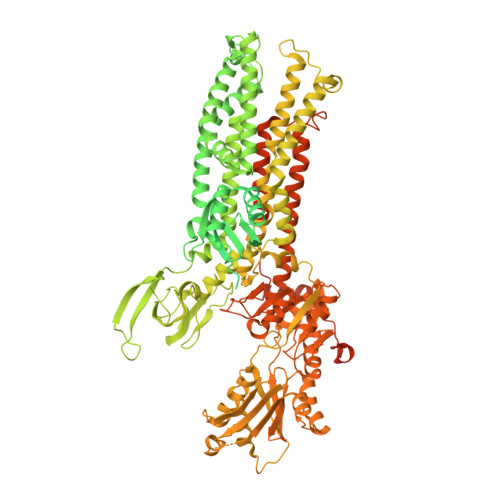Structures of the human Wilson disease copper transporter ATP7B.
Yang, G.M., Xu, L., Wang, R.M., Tao, X., Zheng, Z.W., Chang, S., Ma, D., Zhao, C., Dong, Y., Wu, S., Guo, J., Wu, Z.Y.(2023) Cell Rep 42: 112417-112417
- PubMed: 37074913
- DOI: https://doi.org/10.1016/j.celrep.2023.112417
- Primary Citation of Related Structures:
7XUK, 7XUM, 7XUN, 7XUO, 8IOY - PubMed Abstract:
The P-type ATPase ATP7B exports cytosolic copper and plays an essential role in the regulation of cellular copper homeostasis. Mutants of ATP7B cause Wilson disease (WD), an autosomal recessive disorder of copper metabolism. Here, we present cryoelectron microscopy (cryo-EM) structures of human ATP7B in the E1 state in the apo, the putative copper-bound, and the putative cisplatin-bound forms. In ATP7B, the N-terminal sixth metal-binding domain (MBD6) binds at the cytosolic copper entry site of the transmembrane domain (TMD), facilitating the delivery of copper from the MBD6 to the TMD. The sulfur-containing residues in the TMD of ATP7B mark the copper transport pathway. By comparing structures of the E1 state human ATP7B and E2-P i state frog ATP7B, we propose the ATP-driving copper transport model of ATP7B. These structures not only advance our understanding of the mechanisms of ATP7B-mediated copper export but can also guide the development of therapeutics for the treatment of WD.
Organizational Affiliation:
Department of Medical Genetics and Center for Rare Diseases, and Department of Neurology in Second Affiliated Hospital, and Key Laboratory of Medical Neurobiology of Zhejiang Province, Zhejiang University School of Medicine, Hangzhou, Zhejiang 310009, China.



















